#iot platform functionalities
Explore tagged Tumblr posts
Text
#iot platform#iot platform components#iot platform functionalities#security in iot platforms#legacy iot
0 notes
Text
What has Google killed lately
IoT products.
Last year, the teams responsible for Pixel hardware and Android software were merged into one division, and Google today announced a “voluntary exit program” for employees working in the Platforms & Devices group.
SVP Rick Osterloh sent out a memo to employees this morning about the “voluntary exit program,” and the company confirmed to 9to5Google that this is happening.
This program applies to US employees working on Platforms & Devices, which includes Android (Auto, TV, Wear OS, XR), Chrome, ChromeOS, Google Photos, Google One, Pixel, Fitbit, and Nest. Google has many people around the world working on these products, but today’s announcement is just for those stateside.
Meanwhile, this is not a company-wide offer that applies to Search, AI, or other groups, though Alphabet’s new CFO last October said “driving further efficiencies” was a key priority.
Separately, software and hardware were already two very large organizations, with some overlap. Now that things have settled in recent months, employees have a better idea of their roles. Osterloh said the division received questions about the possibility of voluntary exits since the Pixel-Android merger. Not offering people the option to leave in advance was a complaint about how Google handled past layoffs.
The memo frames this exit program as being beneficial for those who might not be aligned or passionate about the combined organization’s mission or are having difficulty with their roles, and hybrid working requirements.
In leaving Google, employees will get a severance package, with more details internally coming soon. From what we learned, this change does not coincide with any product roadmap changes.
Before the merger, the Google hardware division last January switched to a functional organization model where there is one team (and leader) for teams like hardware engineering across Pixel, Nest, and Fitbit. At the same time, a few hundred roles were cut. The broader unification in April was designed to “speed up decision-making” internally.
In offering this program today, Google wants employees “to be deeply committed to our mission and focused on building great products, with speed and efficiency.” The statement also makes reference to “tremendous momentum” and “so much important work ahead.” Google’s full statement is below.
The Platforms & Devices team is offering a voluntary exit program that provides US-based Googlers working on this team the ability to voluntarily leave the company with a severance package. This comes after we brought two large organizations together last year. There’s tremendous momentum on this team and with so much important work ahead, we want everyone to be deeply committed to our mission and focused on building great products, with speed and efficiency.
63 notes
·
View notes
Text

Next-gen fibers: Smart textile can sense light, pressure, smell and even taste
Researchers successfully developed a multifunctional sensor based on semiconductor fibers that emulates the five human senses. The technology developed in the study is expected to be utilized in a variety of state-of-the-art technology fields, such as wearables, Internet of Things (IoT), electronic devices, and soft robotics. The semiconductor fiber sensor developed by the research team is much more sophisticated and functional than traditional one-dimensional fiber sensors. Notably, the new sensor sensitively responds to changes in the external environment owing to its unique structure within the fibers that allows it to simultaneously measure and monitor light, chemicals, pressure, and environmental information, such as pH (acidity), ammonia (NH3), and mechanical strain levels. The research team proposed these technologies as a new sensor platform that can detect and process multiple signals at once in the same manner as the five human senses.
Read more.
#Materials Science#Science#Fibers#Textiles#Smart materials#Sensors#Semiconductors#Liquid crystals#DGIST
7 notes
·
View notes
Text
Future of ERP Software in India – Trends to Watch in 2025
As we approach the midpoint of this transformative decade, businesses across India are more reliant than ever on advanced technological solutions to stay competitive and agile. Among these, Enterprise Resource Planning (ERP) software continues to evolve rapidly, becoming an indispensable tool for enterprises aiming to streamline operations, enhance efficiency, and drive strategic growth. At Nivida Software, recognised among the Best ERP software providers in Vadodara and widely trusted as one of the Best ERP software providers in Gujarat, we consistently strive to keep ahead of industry shifts and emerging technologies. Today, we're exploring the pivotal trends set to shape the future of ERP software in India in 2025.

1. AI-Powered Predictive Analytics:
Artificial intelligence is no longer merely a concept from the distant future; rather, it is increasingly becoming the foundation of enterprise resource planning software. As of the year 2025, predictive analytics that is powered by artificial intelligence will have become the norm, making it possible for Indian enterprises to foresee market swings, consumer behaviour, and internal operational disturbances in advance. With the use of powerful predictive analytics, enterprise resource planning (ERP) systems will enable businesses to make decisions in real-time that are well-informed, thereby minimising risks and increasing profits.
2. Increased Cloud Adoption:
Cloud technology, already integral to ERP solutions, will witness unprecedented adoption rates. The ease of deployment, scalability, and cost-effectiveness of cloud-based ERP software makes it highly attractive, especially for SMEs in India. As one of the Best ERP software providers in India, Nivida Software anticipates that by 2025, the majority of Indian enterprises, regardless of size, will leverage cloud ERP solutions to stay agile, innovative, and resilient.
3. Customisation and Personalisation:
One-size-fits-all solutions are quickly becoming outmoded, and customisation and personalisation are becoming increasingly important. By the year 2025, enterprise resource planning (ERP) systems will primarily lean towards customised customisation, which will provide features and functionalities that are suited to the specific requirements of each company. The implementation of this change will result in increased flexibility, which will enable businesses in Vadodara, Gujarat, and throughout India to make the most of their ERP investments in terms of both efficacy and applicability.
4. Enhanced Mobile Accessibility:
Given that India is expected to have more than 900 million mobile users by the year 2025, enterprise resource planning software needs to become mobile-friendly in a smooth manner. Increasingly, enterprise resource planning (ERP) suppliers will emphasize mobile-first designs, which will enable employees to access essential data and capabilities from any location and at any time. Because of this accessibility, productivity and response time will be significantly improved, both of which are crucial characteristics in the fast-paced business scene of today.
5. Integration with IoT:
The Internet of Things (IoT) will have a significant influence on the future of enterprise resource planning (ERP) systems in India. With the help of Internet of Things integration, organisations can collect data in real-time from a wide variety of devices and gear, and then feed that data directly into ERP platforms for immediate analysis and action. This trend is going to transform industries such as agriculture, manufacturing, and logistics by making operations more transparent, efficient, and responsive. For example, manufacturing will be revolutionised.
6. Blockchain-Enabled ERP Systems:
Security, transparency, and traceability are increasingly vital in an interconnected business environment. Blockchain integration in ERP software will play a significant role in addressing these needs. By 2025, we expect blockchain to become a central component within ERP solutions, offering enhanced data security, fraud prevention, and improved transparency across supply chains, particularly in sectors such as pharmaceuticals, finance, and agriculture.
7. Sustainability and Environmental Compliance:
Environmental sustainability and regulatory compliance are becoming non-negotiable priorities globally, and India is no exception. Future ERP systems will actively support businesses in tracking, managing, and reporting their environmental footprints and compliance requirements. ERP solutions will thus become crucial tools for enterprises to stay compliant, reduce environmental impact, and maintain market reputation.
8. Advanced User Experience (UX):
Gone are the days when ERP systems were complicated and cumbersome. In the coming years, user experience will be front and centre. ERP solutions will incorporate intuitive interfaces, simplified navigation, and engaging visual dashboards, making complex data accessible and actionable even for non-technical employees. At Nivida Software, we are already pioneering such advancements, reinforcing our position as one of the Best ERP software providers in Gujarat.
9. Real-time Data Processing and Reporting:
By 2025, ERP software will fully transition into real-time data processing systems. Businesses will no longer rely on batch processing or delayed reports. Real-time analytics and instantaneous reporting capabilities will become standard, allowing enterprises to react swiftly to changing market dynamics, operational issues, and emerging opportunities.
10. Increasing Focus on Data Privacy and Security:
With data becoming an invaluable asset, concerns regarding its privacy and security continue to rise. Future ERP systems will incorporate advanced cybersecurity measures and rigorous data protection protocols. Providers who prioritise security and privacy will lead the industry, building trust among their clientele.
Closing Thoughts:
The future of ERP software in India is bright, with advancements promising unprecedented opportunities for growth, innovation, and efficiency. By embracing AI, cloud technology, customisation, mobile accessibility, IoT, blockchain, sustainability measures, enhanced UX, real-time processing, and stringent data security, businesses across Vadodara, Gujarat, and India will unlock new potential for success.
At Nivida Software, recognised consistently as one of the Best ERP software providers in India, we’re committed to helping enterprises navigate these exciting transformations. By continually evolving our offerings, staying ahead of trends, and addressing emerging business challenges, we strive to empower our clients with cutting-edge ERP solutions. The future is here, and it’s smart, secure, and sustainable. Welcome to the ERP landscape of 2025.
3 notes
·
View notes
Text
The Need for Digitization in Manufacturing : Stay Competitive With Low-Code
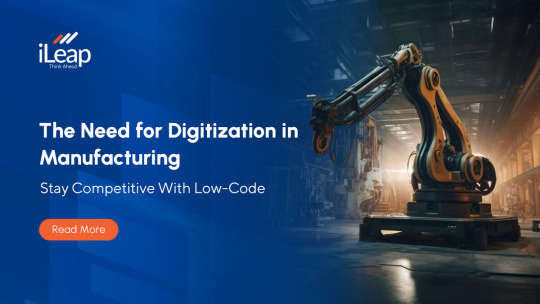
Industry 4.0 is transforming manufacturing with smart factories, automation, and digital integration. Technologies like the Internet of Things (IoT), artificial intelligence (AI), and low-code applications are enabling manufacturers to streamline processes and develop customized solutions quickly. Low-code platforms empower manufacturers to adapt to global demands, driving efficiency and innovation.
Previously, cross-border transactions in manufacturing faced delays due to bureaucracy, complex payment mechanisms, and inconsistent regulations. These challenges led to inefficiency and increased costs. However, Industry 4.0 technologies, such as digital payments, smart contracts, and logistics tracking, have simplified international transactions, improving procurement processes.
Low-code applications are key in this transformation, enabling rapid development of secure solutions for payments, customs clearance, and regulatory compliance. These platforms reduce complexity, enhance transparency, and ensure cost-effective, secure global supply chains. This shift aligns with the demands of a connected global economy, enhancing productivity and competitiveness.
The Need for Digitization in Manufacturing
Digitization has become crucial for manufacturing to stay competitive, with new technologies and the need for automation driving the sector’s transformation. Key features include ERP systems for centralized management of inventory, finances, and operations; digital supply chain tools for visibility and disruption prediction; real-time data for performance monitoring; sustainability tracking; and IoT/RFID for better tracking, accuracy, and reduced waste.
Low-code applications play a pivotal role in digitization by enabling rapid development of tailored solutions for inventory management, supply chain optimization, and performance analytics. These platforms streamline processes, reduce manual work, and enhance agility, helping manufacturers implement digital transformations quickly and cost-effectively.
Upgrading Manufacturing Capabilities in the Era of Industry 4.0 with Low-code Solutions
Low-code applications are becoming essential for digital transformation in manufacturing, addressing operational challenges while managing increased production demands and a shortage of skilled staff. These platforms enable manufacturers to quickly develop tailored applications without needing specialized coding expertise, fostering faster, more flexible operations. By streamlining processes and aligning with modern consumer demands, low-code technology helps bridge the skills gap, empowering manufacturers to stay competitive and seize new opportunities in a rapidly evolving market.
Low-code Technology Benefits for Modern Industries
As digital transformation becomes increasingly crucial for manufacturing, many enterprises in the sector face challenges with outdated processes, legacy system limitations, customization challenges, and inadequate resources. Low-code applications offer a compelling solution, enabling manufacturers to streamline operations by eliminating paper-based processes and automating workflows across functions such as Production, Sales, Logistics, Finance, Procurement, Quality Assurance, Human Resources, Supply Chain, and IT Operations. Additionally, low-code platforms enhance compliance and safety standards through built-in automated tools.
These platforms deliver impressive results, including over 70% improvement in productivity and close to 95% improvement in output quality in specific scenarios. This is particularly evident in automating complex processes like order fulfillment—from receiving customer orders to delivering finished products and managing invoicing with customers. Use cases also include automating inventory management, enhancing predictive maintenance with real-time data, and optimizing supply chain operations. Low-code solutions make it easier for manufacturers to implement changes quickly, boosting agility and reducing time-to-market while improving overall operational efficiency.
Conclusion
Low-code platforms are driving digital transformation in manufacturing, addressing sector-specific challenges in industries like automotive, aviation, and oil & gas. With Industry 4.0 and smart manufacturing, iLeap’s low-code platform helps integrate IoT, advanced analytics, and end-to-end automation, leading to optimized workflows and real-time decision-making. By adopting agile development, manufacturers can quickly adapt to new technologies and market demands, making iLeap the ideal partner for digital transformation. Unlock the potential of Industry 4.0 with iLeap and turn challenges into growth opportunities.
3 notes
·
View notes
Text
How-To IT
Topic: Core areas of IT
1. Hardware
• Computers (Desktops, Laptops, Workstations)
• Servers and Data Centers
• Networking Devices (Routers, Switches, Modems)
• Storage Devices (HDDs, SSDs, NAS)
• Peripheral Devices (Printers, Scanners, Monitors)
2. Software
• Operating Systems (Windows, Linux, macOS)
• Application Software (Office Suites, ERP, CRM)
• Development Software (IDEs, Code Libraries, APIs)
• Middleware (Integration Tools)
• Security Software (Antivirus, Firewalls, SIEM)
3. Networking and Telecommunications
• LAN/WAN Infrastructure
• Wireless Networking (Wi-Fi, 5G)
• VPNs (Virtual Private Networks)
• Communication Systems (VoIP, Email Servers)
• Internet Services
4. Data Management
• Databases (SQL, NoSQL)
• Data Warehousing
• Big Data Technologies (Hadoop, Spark)
• Backup and Recovery Systems
• Data Integration Tools
5. Cybersecurity
• Network Security
• Endpoint Protection
• Identity and Access Management (IAM)
• Threat Detection and Incident Response
• Encryption and Data Privacy
6. Software Development
• Front-End Development (UI/UX Design)
• Back-End Development
• DevOps and CI/CD Pipelines
• Mobile App Development
• Cloud-Native Development
7. Cloud Computing
• Infrastructure as a Service (IaaS)
• Platform as a Service (PaaS)
• Software as a Service (SaaS)
• Serverless Computing
• Cloud Storage and Management
8. IT Support and Services
• Help Desk Support
• IT Service Management (ITSM)
• System Administration
• Hardware and Software Troubleshooting
• End-User Training
9. Artificial Intelligence and Machine Learning
• AI Algorithms and Frameworks
• Natural Language Processing (NLP)
• Computer Vision
• Robotics
• Predictive Analytics
10. Business Intelligence and Analytics
• Reporting Tools (Tableau, Power BI)
• Data Visualization
• Business Analytics Platforms
• Predictive Modeling
11. Internet of Things (IoT)
• IoT Devices and Sensors
• IoT Platforms
• Edge Computing
• Smart Systems (Homes, Cities, Vehicles)
12. Enterprise Systems
• Enterprise Resource Planning (ERP)
• Customer Relationship Management (CRM)
• Human Resource Management Systems (HRMS)
• Supply Chain Management Systems
13. IT Governance and Compliance
• ITIL (Information Technology Infrastructure Library)
• COBIT (Control Objectives for Information Technologies)
• ISO/IEC Standards
• Regulatory Compliance (GDPR, HIPAA, SOX)
14. Emerging Technologies
• Blockchain
• Quantum Computing
• Augmented Reality (AR) and Virtual Reality (VR)
• 3D Printing
• Digital Twins
15. IT Project Management
• Agile, Scrum, and Kanban
• Waterfall Methodology
• Resource Allocation
• Risk Management
16. IT Infrastructure
• Data Centers
• Virtualization (VMware, Hyper-V)
• Disaster Recovery Planning
• Load Balancing
17. IT Education and Certifications
• Vendor Certifications (Microsoft, Cisco, AWS)
• Training and Development Programs
• Online Learning Platforms
18. IT Operations and Monitoring
• Performance Monitoring (APM, Network Monitoring)
• IT Asset Management
• Event and Incident Management
19. Software Testing
• Manual Testing: Human testers evaluate software by executing test cases without using automation tools.
• Automated Testing: Use of testing tools (e.g., Selenium, JUnit) to run automated scripts and check software behavior.
• Functional Testing: Validating that the software performs its intended functions.
• Non-Functional Testing: Assessing non-functional aspects such as performance, usability, and security.
• Unit Testing: Testing individual components or units of code for correctness.
• Integration Testing: Ensuring that different modules or systems work together as expected.
• System Testing: Verifying the complete software system’s behavior against requirements.
• Acceptance Testing: Conducting tests to confirm that the software meets business requirements (including UAT - User Acceptance Testing).
• Regression Testing: Ensuring that new changes or features do not negatively affect existing functionalities.
• Performance Testing: Testing software performance under various conditions (load, stress, scalability).
• Security Testing: Identifying vulnerabilities and assessing the software’s ability to protect data.
• Compatibility Testing: Ensuring the software works on different operating systems, browsers, or devices.
• Continuous Testing: Integrating testing into the development lifecycle to provide quick feedback and minimize bugs.
• Test Automation Frameworks: Tools and structures used to automate testing processes (e.g., TestNG, Appium).
19. VoIP (Voice over IP)
VoIP Protocols & Standards
• SIP (Session Initiation Protocol)
• H.323
• RTP (Real-Time Transport Protocol)
• MGCP (Media Gateway Control Protocol)
VoIP Hardware
• IP Phones (Desk Phones, Mobile Clients)
• VoIP Gateways
• Analog Telephone Adapters (ATAs)
• VoIP Servers
• Network Switches/ Routers for VoIP
VoIP Software
• Softphones (e.g., Zoiper, X-Lite)
• PBX (Private Branch Exchange) Systems
• VoIP Management Software
• Call Center Solutions (e.g., Asterisk, 3CX)
VoIP Network Infrastructure
• Quality of Service (QoS) Configuration
• VPNs (Virtual Private Networks) for VoIP
• VoIP Traffic Shaping & Bandwidth Management
• Firewall and Security Configurations for VoIP
• Network Monitoring & Optimization Tools
VoIP Security
• Encryption (SRTP, TLS)
• Authentication and Authorization
• Firewall & Intrusion Detection Systems
• VoIP Fraud DetectionVoIP Providers
• Hosted VoIP Services (e.g., RingCentral, Vonage)
• SIP Trunking Providers
• PBX Hosting & Managed Services
VoIP Quality and Testing
• Call Quality Monitoring
• Latency, Jitter, and Packet Loss Testing
• VoIP Performance Metrics and Reporting Tools
• User Acceptance Testing (UAT) for VoIP Systems
Integration with Other Systems
• CRM Integration (e.g., Salesforce with VoIP)
• Unified Communications (UC) Solutions
• Contact Center Integration
• Email, Chat, and Video Communication Integration
2 notes
·
View notes
Text
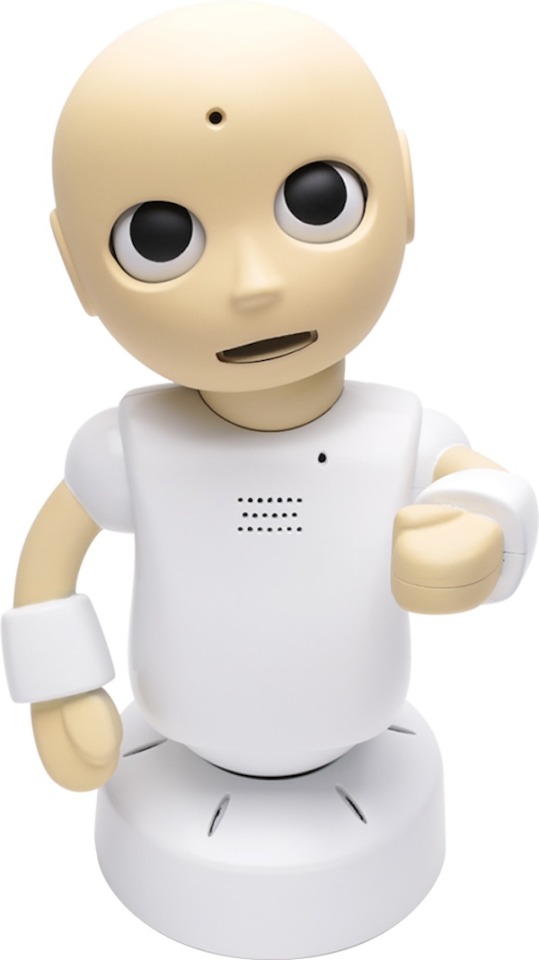
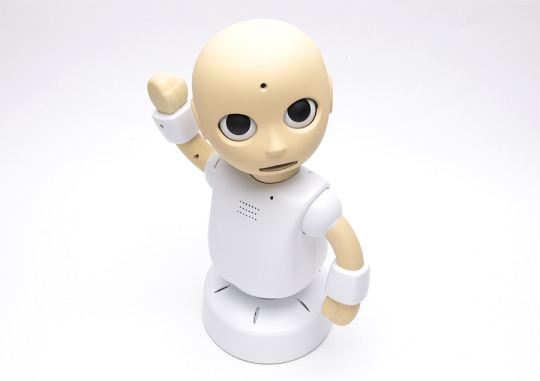





youtube
CommU Social Dialogue Robot (2016) by Vstone, Osaka. "CommU is a new type of conversational robot that can create a more advanced sense of dialogue by showing humans how multiple robots interact with each other. Equipped with cameras, microphones, speakers, network functions, etc., it is a platform that can provide a variety of robot services by highly linking with IoT devices and cloud AI. … The head has 8 axes of freedom to allow movements such as moving the eyes and opening and closing the mouth. These allow the robots to express subtle human-like behavior and emotions." – Social Dialogue Robot "CommU", Vstone.
8 notes
·
View notes
Text
5 Trends in ICT
Exploring the 5 ICT Trends Shaping the Future The Information and Communication Technology (ICT) landscape is evolving at a rapid pace, driven by advancements that are transforming how we live, work, and interact. Here are five key trends in ICT that are making a significant impact:
1. Convergence of Technologies
Technologies are merging into integrated systems, like smart devices that combine communication, media, and internet functions into one seamless tool. This trend enhances user experience and drives innovation across various sectors
Convergence technologies merge different systems, like smartphones combining communication and computing, smart homes using IoT, telemedicine linking healthcare with telecom, AR headsets overlaying digital on reality, and electric vehicles integrating AI and renewable energy.
2. Social Media
Social media platforms are central to modern communication and marketing, offering real-time interaction and advanced engagement tools. New features and analytics are making these platforms more powerful for personal and business use.
Social media examples linked to ICT trends include Facebook with cloud computing, TikTok using AI for personalized content, Instagram focusing on mobile technology, LinkedIn applying big data analytics, and YouTube leading in video streaming.
3. Mobile Technologies
Mobile technology is advancing with faster 5G networks and more sophisticated devices, transforming how we use smartphones and tablets. These improvements enable new applications and services, enhancing connectivity and user experiences.
Mobile technologies tied to ICT trends include 5G for high-speed connectivity, mobile payment apps in fintech, wearables linked to IoT, AR apps like Pokémon GO, and mobile cloud storage services like Google Drive.
4. Assistive Media
Assistive media technologies improve accessibility for people with disabilities, including tools like screen readers and voice recognition software. These innovations ensure that digital environments are navigable for everyone, promoting inclusivity.
Assistive media examples linked to ICT trends include screen readers for accessibility, AI-driven voice assistants, speech-to-text software using NLP, eye-tracking devices for HCI, and closed captioning on video platforms for digital media accessibility.
5. Cloud Computing
Cloud computing allows for scalable and flexible data storage and application hosting on remote servers. This trend supports software-as-a-service (SaaS) models and drives advancements in data analytics, cybersecurity, and collaborative tools.
Cloud computing examples related to ICT trends include AWS for IaaS, Google Drive for cloud storage, Microsoft Azure for PaaS, Salesforce for SaaS, and Dropbox for file synchronization.
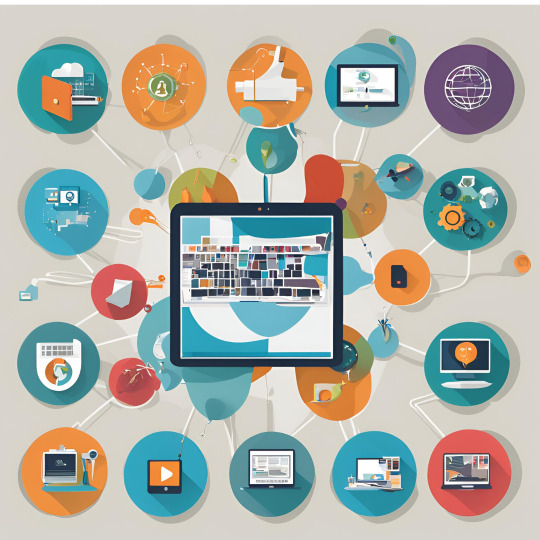
Submitted by: Van Dexter G. Tirado
3 notes
·
View notes
Text
One App Offering Five Solutions.
One great app for all solutions. If you want to quality and branded shopping, there is a new launch on the way called Vizhil. If you need a quick ride or want to go on an immediate trip, or if you are hungry and want spicy or delicious food to eat, Vizhil is for you. If you are having a problem in your household and you need an immediate solution, join us. We also work in the digital industry, and we have given you a digital service—the one super app for your daily needs called Vizhil.
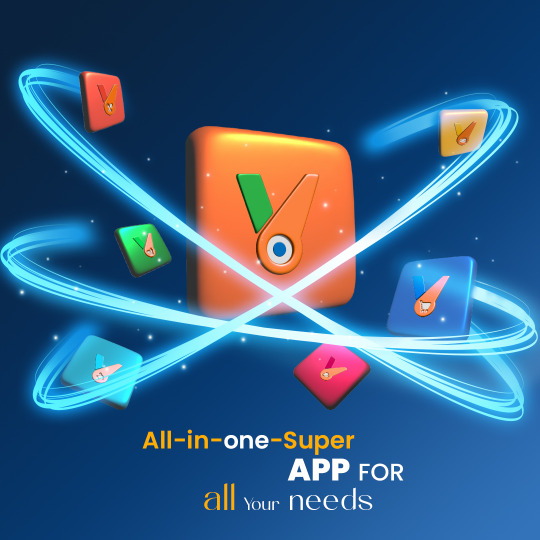
Shop with Vizhil:
The lower-cost and smarter purchasing app with more benefits. branded kurtas with offers and seasonal deals. The ability to browse a wide range of products, compare prices, and read reviews has empowered customers in ways they have never experienced before.
Online shopping app with many perks. Vizhil offers rewards for each visit to our app.
“Have benefits and have useful shopping experiences.” Use your time more effectively by using the Vizhil e-commerce app.
Ride with Vizhil:
Have a safe and smart ride with Vizhil riders. Existing features and safety-secure features are available on one online booking app. With real-time tracking of your ride, stay informed. The app gives you real-time information on the route being taken, the driver's location, and the anticipated time of arrival.
"We make sure you get to your office promptly." That is our team's promise: one app for all your needs. The name is Vizhil.
Food delivery with Vizhil:
When you book using the Vizhil food delivery app, you will never miss out on the taste or heat of the dish. Vizhil gives India's fastest delivery for you to make an online order on the best app, which makes your hungry time a happy one. Food delivery services have surged in popularity, offering a diverse range of cuisines at the tap of a button.
“Turning your hungry time into a pleasant time.” Make your first order on Vizhil Food.
Services facility with Vizhil:
It provides a superb one-stop service facility; if you are having problems with your household items and need assistance, Vizhil can help you. These platforms provide a comprehensive directory, user reviews, and booking options, streamlining the process of finding reliable service providers.
"You are not alone; Vizhil provides you with a budget-friendly and smart service.
Digital service with Vizhil:
Hey businessman, here's the finite solution for all your needs. Vizhil Digital makes you happy with low-budget services such as social media marketing, SEO, AI and machine learning, blockchain, and IoT. Digital transformation enables organizations to function more efficiently and satisfy consumers' ever-increasing demands.
“Make your business grow higher with Vizhil Digital.”
#online#online marketing#onlinebusiness#online store#onlineshopping#audi#sales#bmw#cars#shopping#makeup and cosmetics#organic and natural beauty#auto parts and accessories#laptops and computers#bathroom accessories#online marketing place
2 notes
·
View notes
Text
Intel VTune Profiler For Data Parallel Python Applications
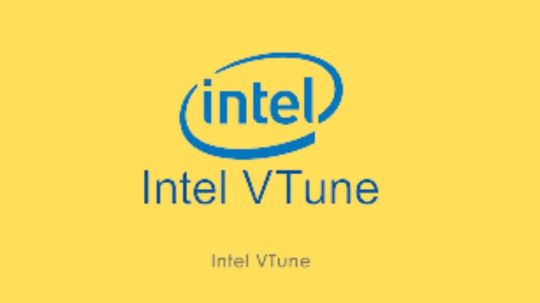
Intel VTune Profiler tutorial
This brief tutorial will show you how to use Intel VTune Profiler to profile the performance of a Python application using the NumPy and Numba example applications.
Analysing Performance in Applications and Systems
For HPC, cloud, IoT, media, storage, and other applications, Intel VTune Profiler optimises system performance, application performance, and system configuration.
Optimise the performance of the entire application not just the accelerated part using the CPU, GPU, and FPGA.
Profile SYCL, C, C++, C#, Fortran, OpenCL code, Python, Google Go, Java,.NET, Assembly, or any combination of languages can be multilingual.
Application or System: Obtain detailed results mapped to source code or coarse-grained system data for a longer time period.
Power: Maximise efficiency without resorting to thermal or power-related throttling.
VTune platform profiler
It has following Features.
Optimisation of Algorithms
Find your code’s “hot spots,” or the sections that take the longest.
Use Flame Graph to see hot code routes and the amount of time spent in each function and with its callees.
Bottlenecks in Microarchitecture and Memory
Use microarchitecture exploration analysis to pinpoint the major hardware problems affecting your application’s performance.
Identify memory-access-related concerns, such as cache misses and difficulty with high bandwidth.
Inductors and XPUs
Improve data transfers and GPU offload schema for SYCL, OpenCL, Microsoft DirectX, or OpenMP offload code. Determine which GPU kernels take the longest to optimise further.
Examine GPU-bound programs for inefficient kernel algorithms or microarchitectural restrictions that may be causing performance problems.
Examine FPGA utilisation and the interactions between CPU and FPGA.
Technical summary: Determine the most time-consuming operations that are executing on the neural processing unit (NPU) and learn how much data is exchanged between the NPU and DDR memory.
In parallelism
Check the threading efficiency of the code. Determine which threading problems are affecting performance.
Examine compute-intensive or throughput HPC programs to determine how well they utilise memory, vectorisation, and the CPU.
Interface and Platform
Find the points in I/O-intensive applications where performance is stalled. Examine the hardware’s ability to handle I/O traffic produced by integrated accelerators or external PCIe devices.
Use System Overview to get a detailed overview of short-term workloads.
Multiple Nodes
Describe the performance characteristics of workloads involving OpenMP and large-scale message passing interfaces (MPI).
Determine any scalability problems and receive suggestions for a thorough investigation.
Intel VTune Profiler
To improve Python performance while using Intel systems, install and utilise the Intel Distribution for Python and Data Parallel Extensions for Python with your applications.
Configure your Python-using VTune Profiler setup.
To find performance issues and areas for improvement, profile three distinct Python application implementations. The pairwise distance calculation algorithm commonly used in machine learning and data analytics will be demonstrated in this article using the NumPy example.
The following packages are used by the three distinct implementations.
Numpy Optimised for Intel
NumPy’s Data Parallel Extension
Extensions for Numba on GPU with Data Parallelism
Python’s NumPy and Data Parallel Extension
By providing optimised heterogeneous computing, Intel Distribution for Python and Intel Data Parallel Extension for Python offer a fantastic and straightforward approach to develop high-performance machine learning (ML) and scientific applications.
Added to the Python Intel Distribution is:
Scalability on PCs, powerful servers, and laptops utilising every CPU core available.
Assistance with the most recent Intel CPU instruction sets.
Accelerating core numerical and machine learning packages with libraries such as the Intel oneAPI Math Kernel Library (oneMKL) and Intel oneAPI Data Analytics Library (oneDAL) allows for near-native performance.
Tools for optimising Python code into instructions with more productivity.
Important Python bindings to help your Python project integrate Intel native tools more easily.
Three core packages make up the Data Parallel Extensions for Python:
The NumPy Data Parallel Extensions (dpnp)
Data Parallel Extensions for Numba, aka numba_dpex
Tensor data structure support, device selection, data allocation on devices, and user-defined data parallel extensions for Python are all provided by the dpctl (Data Parallel Control library).
It is best to obtain insights with comprehensive source code level analysis into compute and memory bottlenecks in order to promptly identify and resolve unanticipated performance difficulties in Machine Learning (ML), Artificial Intelligence ( AI), and other scientific workloads. This may be done with Python-based ML and AI programs as well as C/C++ code using Intel VTune Profiler. The methods for profiling these kinds of Python apps are the main topic of this paper.
Using highly optimised Intel Optimised Numpy and Data Parallel Extension for Python libraries, developers can replace the source lines causing performance loss with the help of Intel VTune Profiler, a sophisticated tool.
Setting up and Installing
1. Install Intel Distribution for Python
2. Create a Python Virtual Environment
python -m venv pyenv
pyenv\Scripts\activate
3. Install Python packages
pip install numpy
pip install dpnp
pip install numba
pip install numba-dpex
pip install pyitt
Make Use of Reference Configuration
The hardware and software components used for the reference example code we use are:
Software Components:
dpnp 0.14.0+189.gfcddad2474
mkl-fft 1.3.8
mkl-random 1.2.4
mkl-service 2.4.0
mkl-umath 0.1.1
numba 0.59.0
numba-dpex 0.21.4
numpy 1.26.4
pyitt 1.1.0
Operating System:
Linux, Ubuntu 22.04.3 LTS
CPU:
Intel Xeon Platinum 8480+
GPU:
Intel Data Center GPU Max 1550
The Example Application for NumPy
Intel will demonstrate how to use Intel VTune Profiler and its Intel Instrumentation and Tracing Technology (ITT) API to optimise a NumPy application step-by-step. The pairwise distance application, a well-liked approach in fields including biology, high performance computing (HPC), machine learning, and geographic data analytics, will be used in this article.
Summary
The three stages of optimisation that we will discuss in this post are summarised as follows:
Step 1: Examining the Intel Optimised Numpy Pairwise Distance Implementation: Here, we’ll attempt to comprehend the obstacles affecting the NumPy implementation’s performance.
Step 2: Profiling Data Parallel Extension for Pairwise Distance NumPy Implementation: We intend to examine the implementation and see whether there is a performance disparity.
Step 3: Profiling Data Parallel Extension for Pairwise Distance Implementation on Numba GPU: Analysing the numba-dpex implementation’s GPU performance
Boost Your Python NumPy Application
Intel has shown how to quickly discover compute and memory bottlenecks in a Python application using Intel VTune Profiler.
Intel VTune Profiler aids in identifying bottlenecks’ root causes and strategies for enhancing application performance.
It can assist in mapping the main bottleneck jobs to the source code/assembly level and displaying the related CPU/GPU time.
Even more comprehensive, developer-friendly profiling results can be obtained by using the Instrumentation and Tracing API (ITT APIs).
Read more on govindhtech.com
#Intel#IntelVTuneProfiler#Python#CPU#GPU#FPGA#Intelsystems#machinelearning#oneMKL#news#technews#technology#technologynews#technologytrends#govindhtech
2 notes
·
View notes
Text
The Evolution of ERP Software: How it is Transforming Engineering and Manufacturing in 2023
In today’s dynamic world of engineering and manufacturing industry, maintaining competitiveness and operational efficiency is of paramount importance. Enterprise Resource Planning (ERP) software has become a fundamental tool for optimising processes, improving efficiency, and facilitating smooth operations in the engineering and manufacturing industries. As we progress into the year 2023, it becomes apparent that enterprise resource planning (ERP) software has experienced a substantial transformation, adapting to the unique requirements of the industry in question. Unlock the full potential of your manufacturing company with ERP software designed and developed by STERP (Shanti Technology). Contact today for a tailored ERP solution for manufacturing company in India that aligns perfectly with your business objectives.
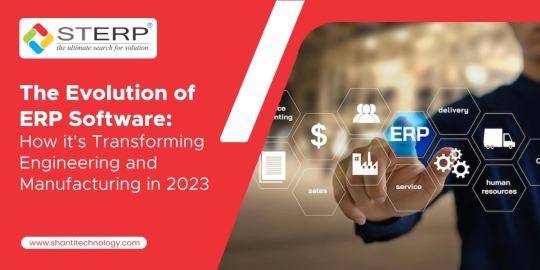
This blog article aims to examine the growth of Enterprise Resource Planning (ERP) software and its significant impact on the fields of engineering and manufacturing.
Historical Perspective: A Brief Overview of ERP Software
The evolution of ERP software since its establishment in the 1960s has been significant, with a notable shift from its initial emphasis on inventory management and order processing. Over the course of several decades, enterprise resource planning (ERP) systems have seen significant growth and development, resulting in the integration of a wide range of corporate functions. These functions include but are not limited to accounting, human resources, procurement, and other related operations. The advancement of technology has led to the evolution of ERP software into a centralised platform that offers real-time data, enhances decision-making processes, and fosters communication across various departments within an organisation.
· Integration of IoT and Industry 4.0:
The combination of the Internet of Things (IoT) and Industry 4.0 technologies represents a notable revolution in ERP software during the year 2023. The Internet of Things (IoT) facilitates the interconnection of various devices and sensors, enabling the collection and sharing of data. This capability offers real-time insights into the industrial process. Enterprise Resource Planning (ERP) systems have the capability to effectively integrate this data, so facilitating manufacturers in making informed decisions based on data analysis and enhancing their operational efficiency.
The principles of Industry 4.0 place significant emphasis on the integration of automation, digitization, and connectivity, which have now been easily included in enterprise resource planning (ERP) software. The integration described enables enterprises to establish a smart industrial setting, increase their control of the supply chain, and optimise operational efficiency.
· Cloud-Based ERP Solutions:
Cloud-based enterprise resource planning (ERP) solutions have significantly transformed the operational landscape of enterprises. This paradigm shift can be attributed to the revolutionary impact of cloud technology on ERP software. In the year 2023, an increasing number of engineering and manufacturing companies are using cloud-based Enterprise Resource Planning (ERP) solutions. The aforementioned solutions possess several benefits, including the ability to scale, adaptability, reduced initial expenses, and convenient availability, rendering them exceedingly appealing to organisations of all sizes. Moreover, the utilisation of cloud-based enterprise resource planning (ERP) systems facilitates the instantaneous exchange of data and promotes collaboration among all parties involved, hence enhancing operational efficiency and cultivating a culture of innovation. Invest in the future of manufacturing. Choose advanced ERP software for engineering companies in India developed by STERP (Shanti Technology) to enhance agility and competitiveness.
· Advanced Analytics and Business Intelligence:
In the current business environment, data holds significant value. Enterprise Resource Planning (ERP) software has evolved to incorporate sophisticated analytics and business intelligence functionalities, enabling the generation of visually appealing data representations and the utilisation of predictive analytics techniques. Manufacturers have the ability to utilise this data in order to anticipate market trends, enhance production schedules, effectively manage inventories, and rapidly make well-informed business decisions. The utilisation of advanced analytics enables engineering and manufacturing enterprises to maintain flexibility and effectively respond to market fluctuations in a timely manner.
· Enhanced User Experience and Mobility:
The optimisation of user experience and mobility is a crucial element in contemporary enterprise resource planning (ERP) systems. In the year 2023, the primary emphasis of ERP software lies in delivering an intuitive and user-friendly interface, with the aim of facilitating smooth adoption and utilisation throughout all hierarchical levels within the organisation. Furthermore, the use of mobility enables stakeholders to conveniently access essential data and capabilities while on the move, hence enhancing productivity and facilitating informed decision-making. Stay ahead in the competitive manufacturing landscape. Reach out to an expert - STERP (Shanti Technology) - the most reliable Engineering ERP Software Company in India and elevate your business operations.
· Cybersecurity and Compliance:
The increasing prevalence of cyber risks has prompted ERP software developers to prioritise the integration of robust cybersecurity capabilities. In the year 2023, enterprise resource planning (ERP) systems place significant emphasis on the paramount importance of data security, adherence to industry laws, and the implementation of effective authentication procedures. This practice guarantees the preservation of confidential corporate information, hence cultivating a sense of trust and assurance among users.
Final Thoughts:
The evolutionary progression of Enterprise Resource Planning (ERP) software in the year 2023 signifies a significant and transformational change within the realm of engineering and manufacturing. The convergence of the Internet of Things (IoT), Industry 4.0 technologies, cloud-based solutions, sophisticated analytics, improved user experience, and heightened cybersecurity measures enables organisations to effectively streamline operations, boost efficiency, and attain long-term, environmentally conscious expansion. With the increasing use of these technological developments, the engineering and manufacturing sectors are poised to witness unparalleled levels of efficiency and creativity, hence setting a bright trajectory for the industry.
In order to remain competitive in today's ever-changing corporate landscape, it is imperative to be informed and capitalise on the capabilities of enterprise resource planning (ERP) software. Ready to streamline your manufacturing operations? Contact STERP (Shanti Technology) a renowned company offering manufacturing ERP software in India and see how it can simplify processes, boost efficiency, and drive profitability.
#ERP for manufacturing company in India#ERP software for engineering companies in India#Engineering ERP Software Company in India#Manufacturing ERP software in India#ERP India#Business Solutions#ERP software#Manufacturing#Engineering#business#shantitechnology#STERP
9 notes
·
View notes
Text
Raspberry Pi Board: Revolutionizing Computing and Education
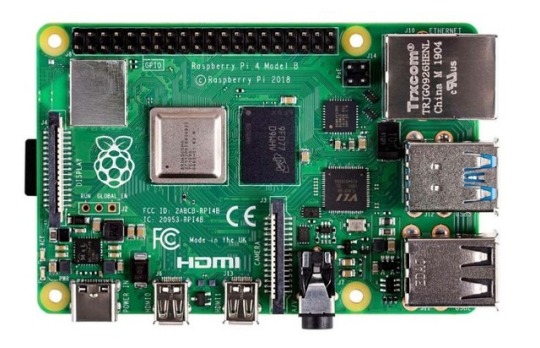
The Raspberry Pi board is a series of small, affordable single-board computers developed by the Raspberry Pi Foundation, a UK-based charity focused on promoting computer science education and digital literacy. Since its launch in 2012, the Raspberry Pi has transformed from a niche educational tool into a versatile platform used in a wide range of applications, from DIY electronics projects to industrial automation.
A Brief History
The first Raspberry Pi, the Model B, was released in February 2012. Designed to promote basic computer science in schools and developing countries, it featured a 700 MHz ARM11 processor, 256 MB of RAM, and basic connectivity options. The success of the Model B led to a rapid expansion of the Raspberry Pi lineup, with various models offering improved performance, more memory, and enhanced connectivity.
Key Features and Models
Raspberry Pi 1 Model B (2012):
Processor: 700 MHz ARM11
Memory: 256 MB RAM
Ports: 2 USB 2.0 ports, HDMI, Composite video, 3.5mm audio jack, Ethernet
Storage: SD card slot
Raspberry Pi 2 Model B (2015):
Processor: 900 MHz quad-core ARM Cortex-A7
Memory: 1 GB RAM
Ports: 4 USB 2.0 ports, HDMI, Composite video, 3.5mm audio jack, Ethernet
Storage: MicroSD card slot
Raspberry Pi 3 Model B (2016):
Processor: 1.2 GHz quad-core ARM Cortex-A53
Memory: 1 GB RAM
Ports: 4 USB 2.0 ports, HDMI, Composite video, 3.5mm audio jack, Ethernet
Wireless: Wi-Fi and Bluetooth
Raspberry Pi 4 Model B (2019):
Processor: 1.5 GHz quad-core ARM Cortex-A72
Memory: Options of 2 GB, 4 GB, and 8 GB RAM
Ports: 2 USB 3.0 ports, 2 USB 2.0 ports, 2 Micro HDMI ports, Ethernet, USB-C for power
Wireless: Wi-Fi and Bluetooth
Raspberry Pi Zero (2015) and Zero W (2017):
Processor: 1 GHz single-core ARM11
Memory: 512 MB RAM
Ports: Mini HDMI, Micro USB OTG, Micro USB for power, GPIO pins
Wireless (Zero W): Wi-Fi and Bluetooth
Applications and Uses
The versatility of the Raspberry Pi has led to its adoption in numerous fields:
Education:
Coding and Programming: Used in schools and educational programs to teach students programming languages such as Python, Scratch, and Java.
Computer Science Concepts: Introduces concepts like hardware, software, and networking.
DIY Projects and Maker Community:
Home Automation: Controls smart home devices, including lights, thermostats, and security systems.
Media Centers: Powers home media centers using software like Kodi.
Retro Gaming: Emulates classic gaming consoles using software like RetroPie.
Industrial and Commercial Applications:
IoT Devices: Serves as a hub for Internet of Things (IoT) devices, enabling data collection and remote control.
Automation and Control Systems: Used in factories and labs for monitoring and controlling equipment.
Research and Development:
Prototyping: Facilitates rapid prototyping of electronic devices and systems.
Data Collection: Gathers data from various sensors in environmental and scientific research.
Community and Ecosystem
The Raspberry Pi has cultivated a vibrant global community of developers, hobbyists, educators, and students. Online forums, tutorials, and community projects provide extensive support and resources for users at all skill levels. The Raspberry Pi Foundation also offers official accessories, including cases, cameras, and expansion boards, further enhancing the functionality of the Raspberry Pi.
Conclusion
The Raspberry Pi board has revolutionized the way people learn about and interact with technology. Its affordability, versatility, and extensive support network have made it an indispensable tool in education, DIY projects, and professional applications. As technology continues to evolve, the Raspberry Pi Foundation remains committed to expanding the capabilities and accessibility of this remarkable platform, ensuring that computing remains within reach for everyone.
3 notes
·
View notes
Text
Revolutionizing Business with IoT: Comprehensive Services and Monitoring Solutions
In today's fast-paced digital era, the Internet of Things (IoT) is transforming the way businesses operate. At RadiantEdge, we understand the immense potential of IoT and are committed to helping businesses in Dubai and beyond leverage this technology to drive innovation, streamline operations, and enhance productivity.
Why IoT is the Future of Business
The Internet of Things refers to the interconnection of everyday devices to the internet, allowing them to send and receive data. This technology enables businesses to automate processes, improve efficiency, and make data-driven decisions. From smart factories to intelligent supply chains, IoT is the backbone of the modern digital transformation... Explore More...
RadiantEdge's Comprehensive IoT Services in Dubai
As leaders in the IT industry with over two decades of experience, RadiantEdge is proud to offer a wide range of IoT services tailored to meet the specific needs of businesses in Dubai. Our IoT services in Dubai include:
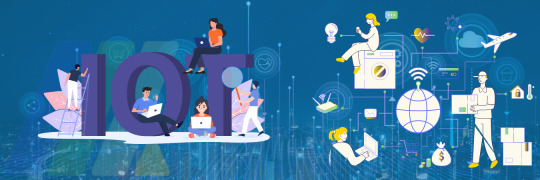
IoT Strategy Development: We work closely with our clients to develop a customized IoT strategy that aligns with their business goals. This includes identifying key opportunities, selecting the right IoT platforms, and designing a roadmap for implementation.
IoT System Design and Integration: Our team of experts designs and integrates IoT systems that connect various devices and sensors, enabling seamless communication and data exchange. We ensure that these systems are scalable and secure, allowing businesses to grow and adapt to changing market conditions.
IoT Implementation and Deployment: From pilot projects to full-scale deployments, RadiantEdge manages every aspect of IoT implementation. We ensure that the transition to IoT is smooth and that systems are operational with minimal disruption to business activities.
Custom IoT Solutions: We understand that every business is unique, which is why we offer customized IoT solutions. Whether it's a smart building, connected vehicles, or an intelligent supply chain, we develop solutions that are tailored to your specific industry and business requirements.
IoT Monitoring: Ensuring Optimal Performance
One of the critical aspects of IoT is ensuring that all connected devices and systems are functioning optimally. Our IoT monitoring solutions are designed to provide real-time insights into the performance of your IoT ecosystem. With advanced analytics and proactive alerts, businesses can monitor the health of their IoT networks, identify potential issues, and take corrective actions before they escalate.
Key Features of Our IoT Monitoring Solutions:
Real-Time Data Analytics: Gain actionable insights from your IoT devices with real-time data analytics. Monitor key performance indicators, track trends, and make informed decisions to optimize operations.
Proactive Alerts: Our monitoring systems are equipped with intelligent alert mechanisms that notify you of any irregularities or potential issues. This allows for timely intervention, reducing downtime and ensuring continuity of operations.
Scalability: As your business grows, so does your IoT network. Our monitoring solutions are designed to scale with your business, providing consistent performance and reliability.
Security and Compliance: IoT security is paramount. We ensure that your IoT systems are protected against cyber threats and comply with industry standards and regulations.
The RadiantEdge Advantage
Choosing RadiantEdge for your IoT services in Dubai means partnering with a team of professionals who are dedicated to your success. Our expertise, combined with our commitment to innovation, makes us the ideal partner for businesses looking to embrace the future of technology.
Experienced Team: With over 20 years in the IT industry, our team has the knowledge and expertise to deliver high-quality IoT solutions.
Customer-Centric Approach: We prioritize our clients' needs and work closely with them to deliver solutions that drive results.
Global Reach: While based in the vibrant town of Nashik, we serve clients across the globe, delivering cutting-edge technology solutions.
Conclusion
The future of business lies in the Internet of Things. At RadiantEdge, we are committed to helping businesses in Dubai and beyond unlock the full potential of IoT. From strategy development to monitoring and maintenance, our comprehensive IoT services ensure that your business stays ahead in a rapidly evolving digital landscape.
Ready to revolutionize your business with IoT? Contact RadiantEdge today to learn more about our IoT services and how we can help you achieve success.
1 note
·
View note
Text
Exploring Python: Features and Where It's Used
Python is a versatile programming language that has gained significant popularity in recent times. It's known for its ease of use, readability, and adaptability, making it an excellent choice for both newcomers and experienced programmers. In this article, we'll delve into the specifics of what Python is and explore its various applications.
What is Python?
Python is an interpreted programming language that is high-level and serves multiple purposes. Created by Guido van Rossum and released in 1991, Python is designed to prioritize code readability and simplicity, with a clean and minimalistic syntax. It places emphasis on using proper indentation and whitespace, making it more convenient for programmers to write and comprehend code.
Key Traits of Python :
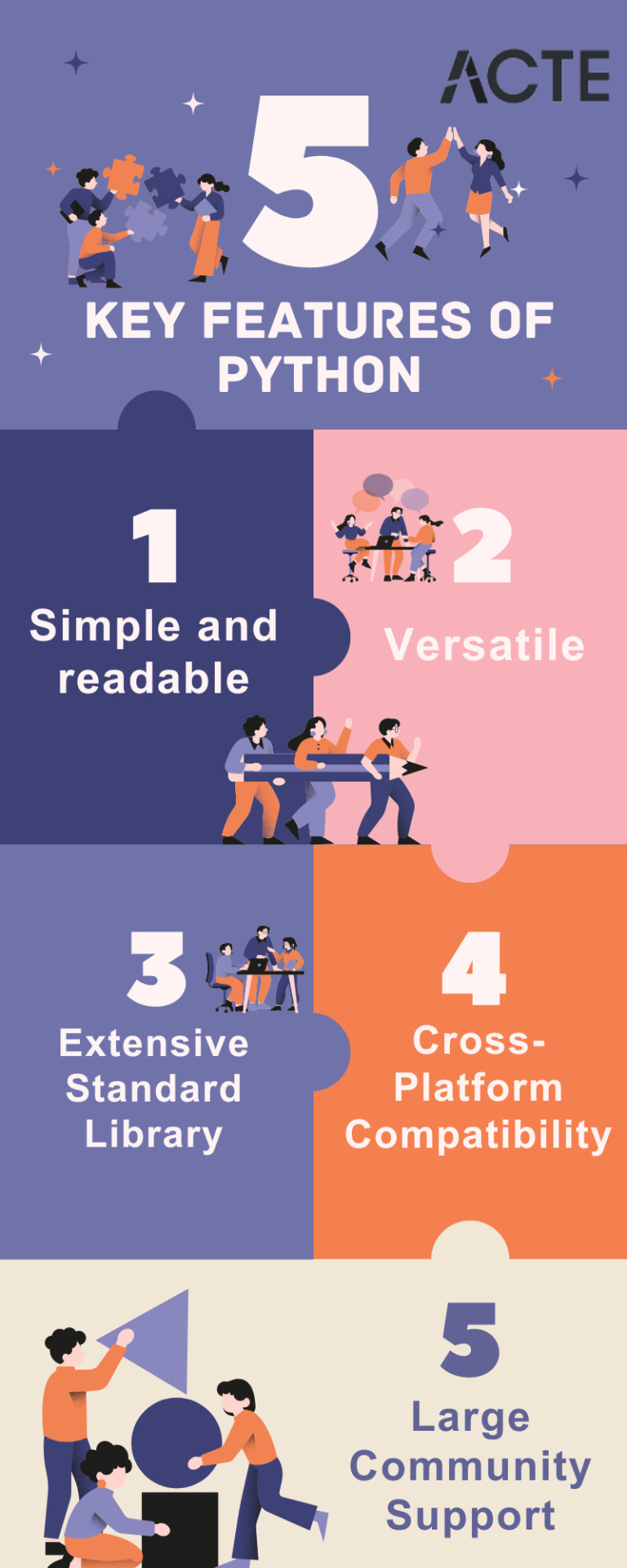
Simplicity and Readability: Python code is structured in a way that's easy to read and understand. This reduces the time and effort required for both creating and maintaining software.
Python code example: print("Hello, World!")
Versatility: Python is applicable across various domains, from web development and scientific computing to data analysis, artificial intelligence, and more.
Python code example: import numpy as np
Extensive Standard Library: Python offers an extensive collection of pre-built libraries and modules. These resources provide developers with ready-made tools and functions to tackle complex tasks efficiently.
Python code example: import matplotlib.pyplot as plt
Compatibility Across Platforms: Python is available on multiple operating systems, including Windows, macOS, and Linux. This allows programmers to create and run code seamlessly across different platforms.
Strong Community Support: Python boasts an active community of developers who contribute to its growth and provide support through online forums, documentation, and open-source contributions. This community support makes Python an excellent choice for developers seeking assistance or collaboration.
Where is Python Utilized?
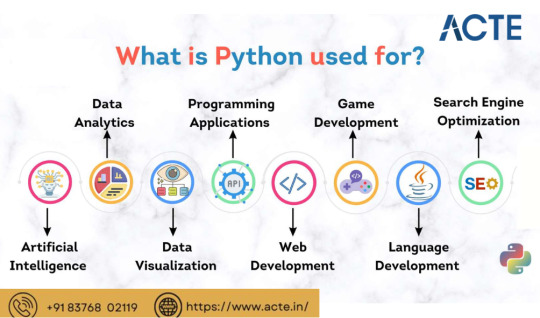
Due to its versatility, Python is utilized in various domains and industries. Some key areas where Python is widely applied include:
Web Development: Python is highly suitable for web development tasks. It offers powerful frameworks like Django and Flask, simplifying the process of building robust web applications. The simplicity and readability of Python code enable developers to create clean and maintainable web applications efficiently.
Data Science and Machine Learning: Python has become the go-to language for data scientists and machine learning practitioners. Its extensive libraries such as NumPy, Pandas, and SciPy, along with specialized libraries like TensorFlow and PyTorch, facilitate a seamless workflow for data analysis, modeling, and implementing machine learning algorithms.
Scientific Computing: Python is extensively used in scientific computing and research due to its rich scientific libraries and tools. Libraries like SciPy, Matplotlib, and NumPy enable efficient handling of scientific data, visualization, and numerical computations, making Python indispensable for scientists and researchers.
Automation and Scripting: Python's simplicity and versatility make it a preferred language for automating repetitive tasks and writing scripts. Its comprehensive standard library empowers developers to automate various processes within the operating system, network operations, and file manipulation, making it popular among system administrators and DevOps professionals.
Game Development: Python's ease of use and availability of libraries like Pygame make it an excellent choice for game development. Developers can create interactive and engaging games efficiently, and the language's simplicity allows for quick prototyping and development cycles.
Internet of Things (IoT): Python's lightweight nature and compatibility with microcontrollers make it suitable for developing applications for the Internet of Things. Libraries like Circuit Python enable developers to work with sensors, create interactive hardware projects, and connect devices to the internet.
Python's versatility and simplicity have made it one of the most widely used programming languages across diverse domains. Its clean syntax, extensive libraries, and cross-platform compatibility make it a powerful tool for developers. Whether for web development, data science, automation, or game development, Python proves to be an excellent choice for programmers seeking efficiency and user-friendliness. If you're considering learning a programming language or expanding your skills, Python is undoubtedly worth exploring.
9 notes
·
View notes
Text
Empowering Digital Innovation: Microlent Systems' Comprehensive Web Development Services
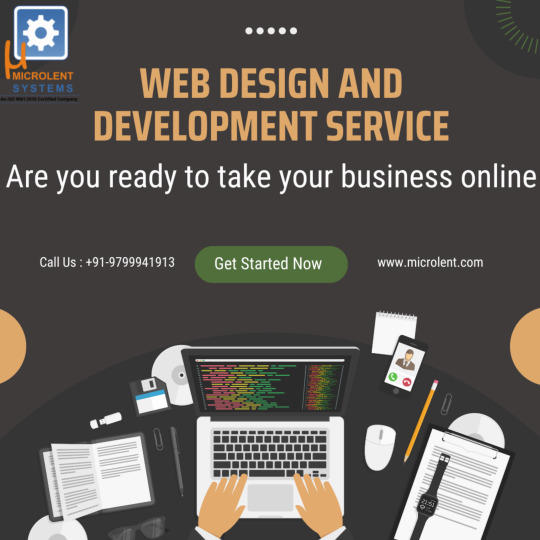
Microlent Systems
In an era dominated by digital transformation, businesses are relentlessly pursuing innovation to stay ahead in their respective markets. Amid this digital race, Microlent Systems emerges as a beacon of technological advancement and a pioneer in web development services. With a robust portfolio that spans web application development, TV application development, wearable technology solutions, enterprise solution development, AI/ML-based solutions, and IoT/hardware integrated solutions, Microlent stands at the forefront of enabling businesses to unlock their full potential in the digital landscape.
Web Application Development: A Cornerstone for Digital Success At the heart of Microlent's services lies its web application development expertise. In understanding the critical role that web applications play in today's business ecosystems, Microlent delivers bespoke solutions that are not just about coding and deployment but about creating a digital experience that resonates with end-users. From e-commerce sites that handle millions of transactions to SaaS platforms that automate business processes, Microlent's approach is to build scalable, secure, and dynamic web applications that drive user engagement and business growth.
Revolutionizing Television with TV Application Development The television industry is undergoing a transformation, with digital platforms and OTT services changing the way content is consumed. Microlent's TV application development service is tailored to meet this new wave of demand. By focusing on user experience, Microlent helps content providers, telecoms, and OTT platforms deliver applications that are intuitive, engaging, and accessible across devices, ensuring content reaches viewers worldwide in the most effective manner possible.
Pioneering in Wearable Technology with Android and Apple Watch Application Development As wearable technologies become an integral part of our daily lives, Microlent is at the helm of developing innovative applications for Android and Apple Watch devices. These applications are not just about extending smartphone functionalities to one's wrist but are designed with a focus on health, fitness, productivity, and lifestyle, ensuring users have a seamless and enriched wearable experience.
Enterprise Solution Development: Catalyzing Business Transformation Microlent recognizes the challenges businesses face in adapting to rapidly changing market conditions. Its enterprise solution development services are focused on building robust, cutting-edge solutions that enable businesses to streamline operations, enhance efficiency, and maintain competitive advantage. Whether it's through CRM systems, ERP solutions, or custom software tailored to specific business needs, Microlent's solutions are a catalyst for digital transformation.
Leading the Way in AI/ML-Based Solutions In the realm of artificial intelligence and machine learning, Microlent is a trailblazer, providing cutting-edge solutions that drive innovation across industries. From predictive analytics and natural language processing to computer vision and intelligent automation, Microlent leverages the latest in AI and ML technologies to help businesses unlock new opportunities, enhance decision-making, and create value in ways never before possible.
Bridging the Physical and Digital with IoT/Hardware Integrated Solutions Microlent's expertise extends into the burgeoning field of IoT and hardware-integrated solutions, where the physical and digital worlds converge. By enabling smart interactions between devices, systems, and services, Microlent's solutions facilitate enhanced data collection, real-time monitoring, and automated control, driving efficiency, sustainability, and innovation across sectors.
Conclusion In the constantly evolving digital landscape, Microlent Systems stands out as a partner of choice for businesses looking to harness the power of technology for growth, innovation, and digital transformation. With a commitment to excellence, a passion for innovation, and a comprehensive suite of web development services, Microlent is dedicated to empowering businesses to achieve their digital aspirations.
#india#software development#mobile app development#mobile app development company in india#web design india#softwaredevelopment#web development
2 notes
·
View notes
Text
25 Python Projects to Supercharge Your Job Search in 2024
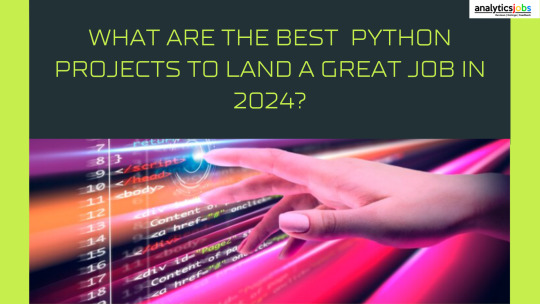
Introduction: In the competitive world of technology, a strong portfolio of practical projects can make all the difference in landing your dream job. As a Python enthusiast, building a diverse range of projects not only showcases your skills but also demonstrates your ability to tackle real-world challenges. In this blog post, we'll explore 25 Python projects that can help you stand out and secure that coveted position in 2024.
1. Personal Portfolio Website
Create a dynamic portfolio website that highlights your skills, projects, and resume. Showcase your creativity and design skills to make a lasting impression.
2. Blog with User Authentication
Build a fully functional blog with features like user authentication and comments. This project demonstrates your understanding of web development and security.
3. E-Commerce Site
Develop a simple online store with product listings, shopping cart functionality, and a secure checkout process. Showcase your skills in building robust web applications.
4. Predictive Modeling
Create a predictive model for a relevant field, such as stock prices, weather forecasts, or sales predictions. Showcase your data science and machine learning prowess.
5. Natural Language Processing (NLP)
Build a sentiment analysis tool or a text summarizer using NLP techniques. Highlight your skills in processing and understanding human language.
6. Image Recognition
Develop an image recognition system capable of classifying objects. Demonstrate your proficiency in computer vision and deep learning.
7. Automation Scripts
Write scripts to automate repetitive tasks, such as file organization, data cleaning, or downloading files from the internet. Showcase your ability to improve efficiency through automation.
8. Web Scraping
Create a web scraper to extract data from websites. This project highlights your skills in data extraction and manipulation.
9. Pygame-based Game
Develop a simple game using Pygame or any other Python game library. Showcase your creativity and game development skills.
10. Text-based Adventure Game
Build a text-based adventure game or a quiz application. This project demonstrates your ability to create engaging user experiences.
11. RESTful API
Create a RESTful API for a service or application using Flask or Django. Highlight your skills in API development and integration.
12. Integration with External APIs
Develop a project that interacts with external APIs, such as social media platforms or weather services. Showcase your ability to integrate diverse systems.
13. Home Automation System
Build a home automation system using IoT concepts. Demonstrate your understanding of connecting devices and creating smart environments.
14. Weather Station
Create a weather station that collects and displays data from various sensors. Showcase your skills in data acquisition and analysis.
15. Distributed Chat Application
Build a distributed chat application using a messaging protocol like MQTT. Highlight your skills in distributed systems.
16. Blockchain or Cryptocurrency Tracker
Develop a simple blockchain or a cryptocurrency tracker. Showcase your understanding of blockchain technology.
17. Open Source Contributions
Contribute to open source projects on platforms like GitHub. Demonstrate your collaboration and teamwork skills.
18. Network or Vulnerability Scanner
Build a network or vulnerability scanner to showcase your skills in cybersecurity.
19. Decentralized Application (DApp)
Create a decentralized application using a blockchain platform like Ethereum. Showcase your skills in developing applications on decentralized networks.
20. Machine Learning Model Deployment
Deploy a machine learning model as a web service using frameworks like Flask or FastAPI. Demonstrate your skills in model deployment and integration.
21. Financial Calculator
Build a financial calculator that incorporates relevant mathematical and financial concepts. Showcase your ability to create practical tools.
22. Command-Line Tools
Develop command-line tools for tasks like file manipulation, data processing, or system monitoring. Highlight your skills in creating efficient and user-friendly command-line applications.
23. IoT-Based Health Monitoring System
Create an IoT-based health monitoring system that collects and analyzes health-related data. Showcase your ability to work on projects with social impact.
24. Facial Recognition System
Build a facial recognition system using Python and computer vision libraries. Showcase your skills in biometric technology.
25. Social Media Dashboard
Develop a social media dashboard that aggregates and displays data from various platforms. Highlight your skills in data visualization and integration.
Conclusion: As you embark on your job search in 2024, remember that a well-rounded portfolio is key to showcasing your skills and standing out from the crowd. These 25 Python projects cover a diverse range of domains, allowing you to tailor your portfolio to match your interests and the specific requirements of your dream job.
If you want to know more, Click here:https://analyticsjobs.in/question/what-are-the-best-python-projects-to-land-a-great-job-in-2024/
#python projects#top python projects#best python projects#analytics jobs#python#coding#programming#machine learning
2 notes
·
View notes